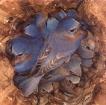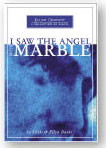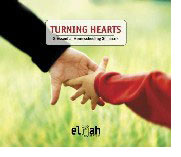
Spring is Here...
and it's time for a Nature Journal
Read past issues of the
e-journal HERE>>
Sign up below to have the e-journals sent directly to your inbox.
by Ellyn Davis
For the last few weeks I’ve heard the sounds of spring whenever I go outside. It started with the bluebirds. Before the first crocus had broken through the ground, they were flitting around and calling to one another in their funny warbles.
 |
Next were the spring peepers. They were later than usual this spring and for a week or so I was a little worried that Tennessee had fallen prey to the global epidemic of diminishing frog populations. But, not to worry. Before long I started hearing the familiar peeps that told me they were out of hibernation and looking for mates. And after a week or two, they were joined by the chorus frogs.
 Then the titmice and chickadees started adding their contribution. Yesterday as I was coming in the house a persistent chickadee sat on a branch near the door and belted out his familiar cry of "Fee bee, fee bay...fee bee, fee bay." Chicadees are the acrobats of the bird world and are so perky that when I'm down just watching one helps me find my emotional balance. Then the titmice and chickadees started adding their contribution. Yesterday as I was coming in the house a persistent chickadee sat on a branch near the door and belted out his familiar cry of "Fee bee, fee bay...fee bee, fee bay." Chicadees are the acrobats of the bird world and are so perky that when I'm down just watching one helps me find my emotional balance.
 |
I love nature and the natural world, so this season of the year, when everything in nature seems to be waking up from its long winter nap, is my favorite time of year. It is full of surprises. One day the flowerbed will look bleak and the next, hundreds of daffodils are pointing their green shoots towards the sun.
So I decided to make nature study the topic of this newsletter.
Spring is the ideal time to take the children outdoors to discover the wonders of God’s creation.
Whether you want to do a full-fledged semester study on nature or just a short unit study as a break from other work, this is the time of year to do it. So for this issue of the ejournal, I want to share excerpts from an article written by Judith Kowles, who for years was moderator of the Elijah Company's website bulletin board.
Nature Notebooking
by Judith Kowles
Have you ever wanted your children to be drawn into learning, but just didn't know how? Nature notebooking is a natural way for a child to learn about nature while having fun.
It all starts with a walk through the woods, or along a river, or a hike along some path through a park. We have a river near our home which we frequently visit especially during the spring and summer. On a warm sunny day we will walk along the river and then pick a spot to sit and observe. Each child brings a clipboard, or vinyl zippered notebook with their papers, pencils, crayons, and erasers inside of it. They might see a crawfish or turtle along the path, and they will describe and draw it. In this one exercise there are so many components incorporated as they write, draw, spell, use grammar and research. This is the beginning of real learning and appreciation of nature.
Getting Started
Communicating ideas as to how to do something like notebooking can be quite a challenge. When I first introduced this idea to my children they would look at me with blank stares. They just didn't get it. That was because they were used to writing only what they HAD to write. Their writing was stifled, without depth or feeling. Plus, it was always a chore trying to help them decide what to write about.
So, I read portions to them from Wisdom's Way of Learning, and we listened to an audio tape by Cindy Rushton called, Notebooking! Yes! You CAN Be a Binder Queen!
With a nature notebook, topics to write about will come naturally when you are on a walk or hike. There is always something to sketch and then the child can write about it with feeling, also describing how he sees the attributes of God through nature.
The first thing to do in getting started is to begin exploring. Get comfortable with the outdoors and begin to listen and look for things in nature that you are not used to noticing. You will find that being confined and cooped up inside stifles your senses so that you don’t hear and see the world around you. Take walks as often as you can so that you begin to hear the river, hear how one bird sounds different than another, listen to the frogs croak, or the turtles splash into the swamp.
Teach your children to listen and hear these things too. That might mean that they need to have some rules for the walk (or a portion of the walk) or they will chatter and run noisily through the thicket, cracking branches and scaring any nature away that isn't stuck in the ground by a trunk!! Have them sit quietly for five minutes and increase the amount of time as they become comfortable with nature so they notice the sounds and feel drawn to the peaceful surroundings. Help them to notice their surroundings. Is there limestone rock, dirt, clay, a river? What kind of trees are there, is there grass?
When they become experienced nature journalists take them on a walk in inclement weather. Have you ever taken a walk in the rain, snow, or sleet? I know it is nicer to stay inside but there are still very interesting things to see and hear.
Let them collect objects from nature that they find along the way in a small Ziploc bag. Then when they get home they can either put the object into their notebook (if flat) or draw it.
Notebook Building How-to
Setting up a Nature Notebook is easy for a young child. Just purchase a three ring binder and slip a pretty picture into the front sleeve or try the Note Sketchbook which has a blank top half of the page and a lined bottom half. We like to use pictures from old calendars cut down to the correct size. If the child is older or interested in drawing, he can draw and design his own insert for the cover of the Notebook.
For a younger child, slip his notebook entries into a plastic sleeve for protection. Don't worry about the order or organizing it into sections (plants, trees, birds) until the child is able to do it himself. Otherwise you’ll complicate the process and make it 'yours' instead of the child's. One of my children (at least) always liked to change around where his accomplishments were kept, so I was glad that I had not put them how "I" wanted them.
For an older child, his notebook will take on an individual look all his own. He might like to have it divided into sections to reflect various interests such as birds, trees, and whatever other areas catch his eye. It really doesn't matter how it is done, as it is something that reflects the personal style of each child's identity. Plastic sleeves give a neat and professional appearance that is sure to impress grandparents and friends. The notebook is also a keepsake and the plastic sleeves will protect the pages and save the holes from ripping. Eventually, if any one interest grows too large for the binder, it can be moved to its own binder. This is the beginning of writing a book!!
Children should leave their actual nature notebook at home during walks or the notebook will get ruined. Use a Note Sketchbook on the walk, and cut the page to fit the plastic sheet when the child gets home. Sketching is not accurate drawing which tends to discourage most children and adults alike. It is just a rough drawing that basically shows what they have seen. In a journal, stories having to do with animals, or other adventurous journeys through nature may be added to the book to add variety. One child might want her journal to reflect a summer vegetable or flower garden. Another might want it to reflect a season like spring which brings so many changes in nature. The ideas are endless.
Notebooking and History
We have learned to include many wonderful things in our Nature Notebooks by reading and studying books by naturalists. Keeping a Nature Journal by Leslie Roth has all sorts of ideas. It has pages upon pages of beautiful examples for your own book. Throughout the book it gives ideas on what can be included to make your journal interesting.
We know so much about the travels of Christopher Columbus because records of his explorations were recorded in his Logbook, another name for a nature notebook or journal. His logbook is an extremely detailed book of his travels and adventures. With his logbook, he convinced Queen Isabella that he had actually reached the New World.
President Thomas Jefferson hired explorers Lewis and Clark to lead the expedition on the Missouri River to the Pacific Ocean. Yes, Lewis and Clark were skilled explorers, but each of them kept a meticulous journal of their travels that included detailed drawings and writings. These are the best records we have today of their hazardous two-year journey.
Formal schooling will not teach a child how to be a good naturalist. The best scientists were men like Thomas Edison who could not learn in a typical school but learned by doing. Today, we would call this a lifestyle of learning. The wonderful thing about Nature Journaling is that the child learns the scientific principles of observation. A child learns to be self-taught which is a skill that will cause learning to last a lifetime. This is a foundational goal of the lifestyle of learning - to encourage a child to engage in learning for a lifetime.
If you want to expand your child's learning environment, consider nature notebooking. It is a natural way to involve your children in learning, taking the 'classroom' outdoors. Children love this. You will love this relaxed approach to learning for both you and your children. You might even find yourself keeping your own nature journal.
Judie is a mother of 7 wonderful children and has been educating them at for 20 years.
For more information about nature study through taking your children on nature walks, GO HERE>>
Top 10 Nature Notebooking Resources
Here are my top picks for nature study. The list continues in the right hand column.
1. Rather than teaching science from a textbook, why not let each child keep
a nature journal? The Country Diary of an Edwardian Lady is a wonderful example
of how nature, art, literature, and history can be interwoven. In 1906
Edith Holden began a nature journal in which she recorded and illustrated
what she saw month by month during walks in the English countryside. She began each
month’s entry with brief historical explanations of events associated with that month. The rest of each month’s entry consisted of notes of what she saw on her frequent
walks interspersed with drawings of selective wildlife and plants. She also included poems and famous quota tions about the month or about the things she saw. Her
watercolor illustrations are exquisite and her Victorian penmanship is delightful.
 2. Keeping a Nature Journal is the nature journaling “how-to” book we have been
wishing for. It begins by explaining the equipment you will need and giving some simple and encouraging sketching lessons. Then it gets to the best parts—many, many pages
with samples of journaling styles, generously interspersed with tips on different ways to develop a nature journal, plus ideas for journaling in each season of the year. A beautifully done, very special book that will make you long to start your own nature journal. 2. Keeping a Nature Journal is the nature journaling “how-to” book we have been
wishing for. It begins by explaining the equipment you will need and giving some simple and encouraging sketching lessons. Then it gets to the best parts—many, many pages
with samples of journaling styles, generously interspersed with tips on different ways to develop a nature journal, plus ideas for journaling in each season of the year. A beautifully done, very special book that will make you long to start your own nature journal.
 3. Pets in A Jar is our all-time favorite nature book. It teaches you how to find, catch, and keep many small animals such as butterflies and moths, earthworms, water bugs, hydras, toads, newts, pond snails, crickets, tadpoles, praying mantises, and more. For ages 9 and up and extremely useful to mothers whose children keep bringing home “critters.” If you intend to study animals in a hands-on way, this is the book to get. A “must have” for young naturalists. All ages. 3. Pets in A Jar is our all-time favorite nature book. It teaches you how to find, catch, and keep many small animals such as butterflies and moths, earthworms, water bugs, hydras, toads, newts, pond snails, crickets, tadpoles, praying mantises, and more. For ages 9 and up and extremely useful to mothers whose children keep bringing home “critters.” If you intend to study animals in a hands-on way, this is the book to get. A “must have” for young naturalists. All ages.
 4. Fun with Nature and More Fun With Nature are really neat hardcover “take-
along guides” to exploring the outdoors that cover the most common bugs,
reptiles, amphibians, small animals,and trees, with full color illustrations of
what it looks like, what it eats, and where to find it. Filled with fascinating facts & activities for ages 6 - 12. 4. Fun with Nature and More Fun With Nature are really neat hardcover “take-
along guides” to exploring the outdoors that cover the most common bugs,
reptiles, amphibians, small animals,and trees, with full color illustrations of
what it looks like, what it eats, and where to find it. Filled with fascinating facts & activities for ages 6 - 12.
5. Nature Log for Kids can be the first step to keeping a nature journal. A colorful, spiral-bound 5" x 7" book that guides kids to record their nature observations. Pages have ruled spaces at the top to enter “What I Saw,” “Where I Saw It,” & “Observations” and a blank lower half labeled “It Looked Like This” for sketches. Interspersed between these log pages are blank pages for photos, clippings, pressed leaves, etc.
 6. Audubon Society Pocket Guides. We like pocket guides best for ages 8 and under because they have color photographs instead of drawings, their compact size (4" x 6") appeals to children, and they cover only things a child is likely to see. Each guide is about 200 pages with each left side page a color photograph and each right side page a brief explanation. Get as many of these as your budget allows. 6. Audubon Society Pocket Guides. We like pocket guides best for ages 8 and under because they have color photographs instead of drawings, their compact size (4" x 6") appeals to children, and they cover only things a child is likely to see. Each guide is about 200 pages with each left side page a color photograph and each right side page a brief explanation. Get as many of these as your budget allows.
7. Audubon Society Field Guides are the BIG, comprehensive field guides (5" x 8" x 1½” thick) with flexi-vinyl covers. Start with the ones on the wildlife your children are most interested in and gradually build up your collection of all of them.
 8. Peterson First Guides. These are the only non-Audubon guides we recommend, because they cover areas of animal life not found in the Audubon pocket guides. Peterson First Guide to Urban Wildlife covers the city wild creatures a child is likely to see. Peterson First Guide to Caterpillars is the only children's guide I know of that covers caterpillars. 8. Peterson First Guides. These are the only non-Audubon guides we recommend, because they cover areas of animal life not found in the Audubon pocket guides. Peterson First Guide to Urban Wildlife covers the city wild creatures a child is likely to see. Peterson First Guide to Caterpillars is the only children's guide I know of that covers caterpillars.
 9. Reader's Digest Guide to North American Wildlife covers the most common plants, animals, insects, and sea life in North America. A one-stop nature study resource. 9. Reader's Digest Guide to North American Wildlife covers the most common plants, animals, insects, and sea life in North America. A one-stop nature study resource.
10. National Audubon Society Regional Field Guides. The animals, plants, and natural
environments of different regions of the United States are fully described in these nifty field guides. Each guide contains more than 1,000 accounts of local animal and plant species; clear explanations of each region’s natural history, climate, and night sky; information on all the best parks, preserves, forest, and sanctuaries; and nearly 1,500 color illustrations, photographs, maps, diagrams, and drawings. These are wonderful alternatives to buying separate field guides for birds, trees, wildflowers, night sky, etc.
Field Guide to the Southeastern States (Alabama, Arkansas, Georgia, Kentucky, North Carolina, South Carolina, Tennessee)
Field Guide to the Southwestern States (Arizona, Nevada, New Mexico, Utah)
Field Guide to New England (Connecticut, Maine, Massachusetts, New Hampshire, Rhode Island, Vermont)
Field Guide to the Mid-Atlantic States (New York, Pennsylvania, New Jersey, Maryland, Delaware, West Virginia, Virginia)
Field Guide to the Pacific Northwest (Oregon, Washington)
Field Guide to the Rocky Mountain States (Idaho, Montana, Wyoming, Colorado)
Field Guide to California
Field Guide to Florida

© Copyright 2008. Home School Marketplace, 1053 Eldridge Loop, Crossville, TN 38571.
|

















